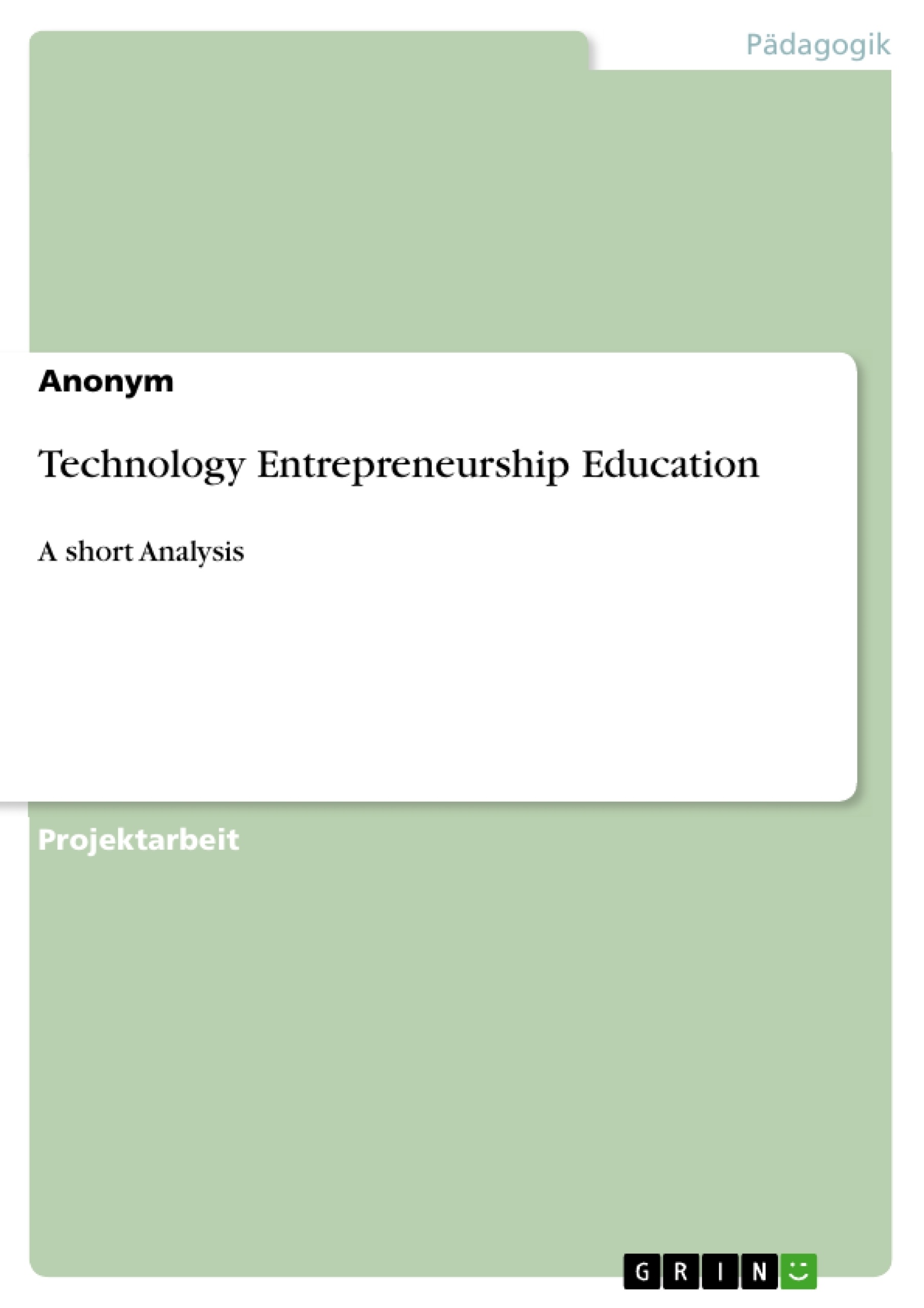University educational institutions have long neglected to provide entrepreneurial programmes for technology-oriented students. The field of entrepreneurship education has provided evidence that research interest in technology entrepreneurship has steadily increased in recent years. However, research in this area remains in its early stages. This paper examines two areas of technology entrepreneurship education: pedagogical approaches and teaching models. The objective is to identify the teaching models and pedagogical concepts are already in use and any research gaps. A systematic literature search in the field of technology entrepreneurship education is carried out; 15 articles in 13 journals from an eight-year period are systematically analysed and weighed against each other. The results indicate a shift in entrepreneurship education from a teacher-centred to a student-centred approach. The "through" learning approach is becoming more important in teaching technology entrepreneurship and in entrepreneurship as a whole. In addition, a significant lack of teaching models for technology entrepreneurship was found. In this paper, a programme for technology-based entrepreneurship is developed and recommended on the basis of the literature research.
Inhaltsverzeichnis
- Abstract
- Inhaltsverzeichnis
- Liste der Tabellen
- Liste der Abbildungen
- 1. Einleitung
- 2. Theorie
- 2.1 Unternehmerische Bildung
- 2.2 Technologieunternehmerische Bildung
- 3. Forschungsmethode
- 3.1 Forschungsmethodik
- 3.2 Zeitschriftensuche
- 3.2.1 Forschungsfragen
- 3.2.2 Auswahl der Datenbanken und Schlüsselwörter
- 3.2.3 Zeitrahmen
- 3.2.4 Auswahl der Zeitschriften
- 3.3 Quellen
- 4. Forschungsstand
- 4.1 Lehrrahmenwerke
- 4.2 Pädagogische Methoden und Ansätze
- 5. Entwicklung des Falltrainings-Programms für Technologieunternehmertum
- 6. Diskussion
- 6.1 Lehrmodelle im Technologieunternehmertum
- 6.2 Pädagogische Konzepte im Technologieunternehmertum
- 7. Schlussfolgerung
- Literaturverzeichnis
- Liste der Tabellen
- Liste der Abbildungen
Zielsetzung und Themenschwerpunkte
Diese Arbeit untersucht die Integration von Technologieunternehmertum in universitäre Bildungseinrichtungen. Sie analysiert den aktuellen Forschungsstand in Bezug auf pädagogische Ansätze und Lehrmodelle im Bereich des Technologieunternehmertums. Das Ziel ist es, Forschungslücken zu identifizieren und ein Programm für technologiebasiertes Unternehmertum zu entwickeln.
- Pädagogische Ansätze im Technologieunternehmertum
- Lehrmodelle für technologiebasiertes Unternehmertum
- Entwicklung eines Falltrainings-Programms für Technologieunternehmertum
- Bewertung des aktuellen Forschungsstands
- Identifizierung von Forschungslücken
Zusammenfassung der Kapitel
Kapitel 1 liefert eine Einleitung in das Thema Technologieunternehmertum und dessen Bedeutung für Bildungseinrichtungen. Kapitel 2 beleuchtet die theoretischen Grundlagen der Unternehmerischen Bildung und der Technologieunternehmerischen Bildung. Kapitel 3 beschreibt die Forschungsmethodik, die für die Analyse der relevanten Literatur eingesetzt wurde. Kapitel 4 präsentiert den aktuellen Forschungsstand im Bereich der Lehrrahmenwerke und pädagogischen Methoden im Technologieunternehmertum. Kapitel 5 befasst sich mit der Entwicklung eines Case-Training-Programms für Technologieunternehmertum. Kapitel 6 diskutiert verschiedene Lehrmodelle und pädagogische Konzepte im Kontext des Technologieunternehmertums.
Schlüsselwörter
Technologieunternehmertum, Unternehmerische Bildung, Pädagogische Ansätze, Lehrmodelle, Falltraining, Forschungslücken, Case-Training-Programm, Technologiebasiertes Unternehmertum, Hochschulen, Bildungseinrichtungen.
- Quote paper
- Anonym (Author), 2019, Technology Entrepreneurship Education, Munich, GRIN Verlag, https://www.grin.com/document/975142



